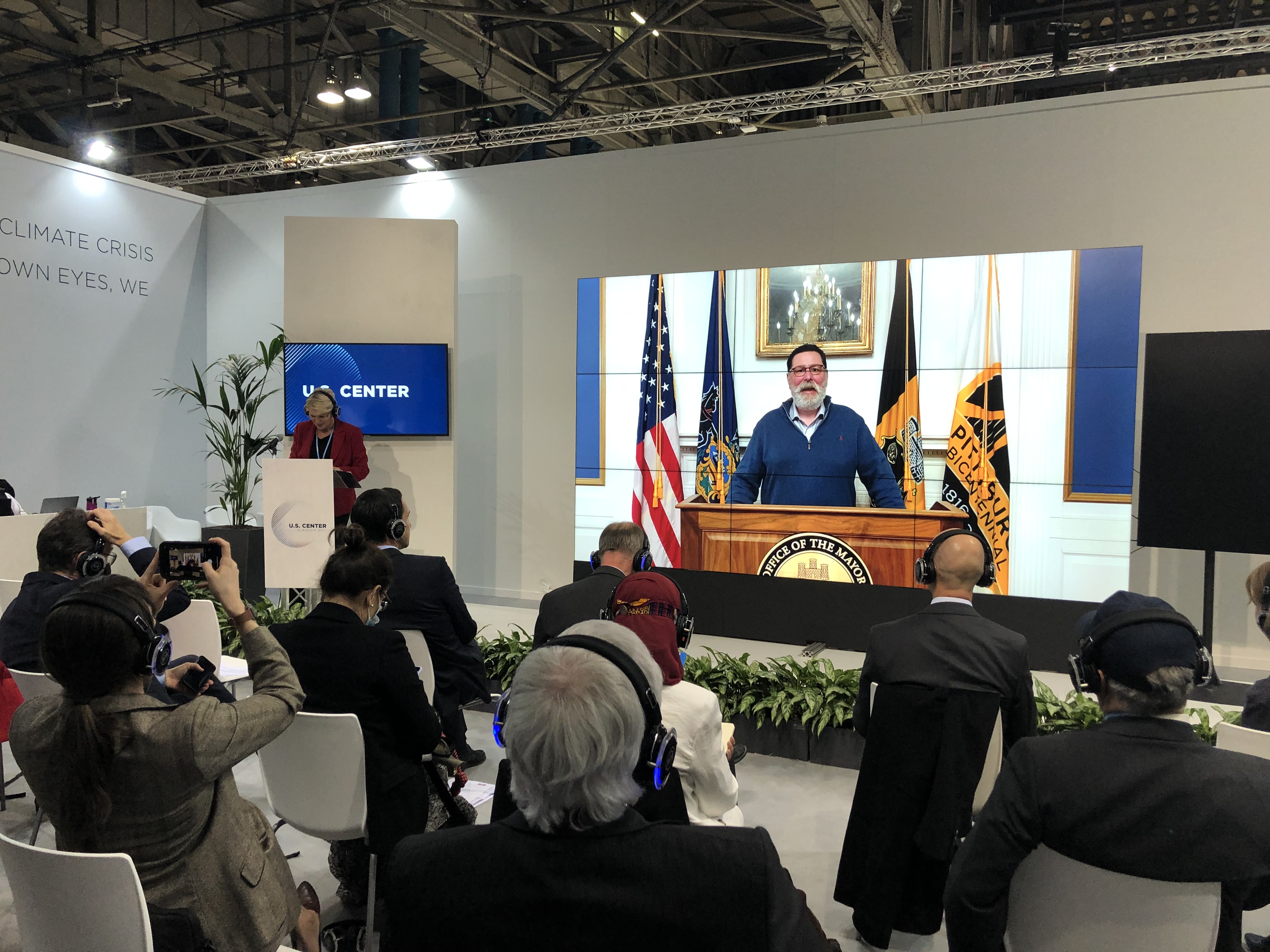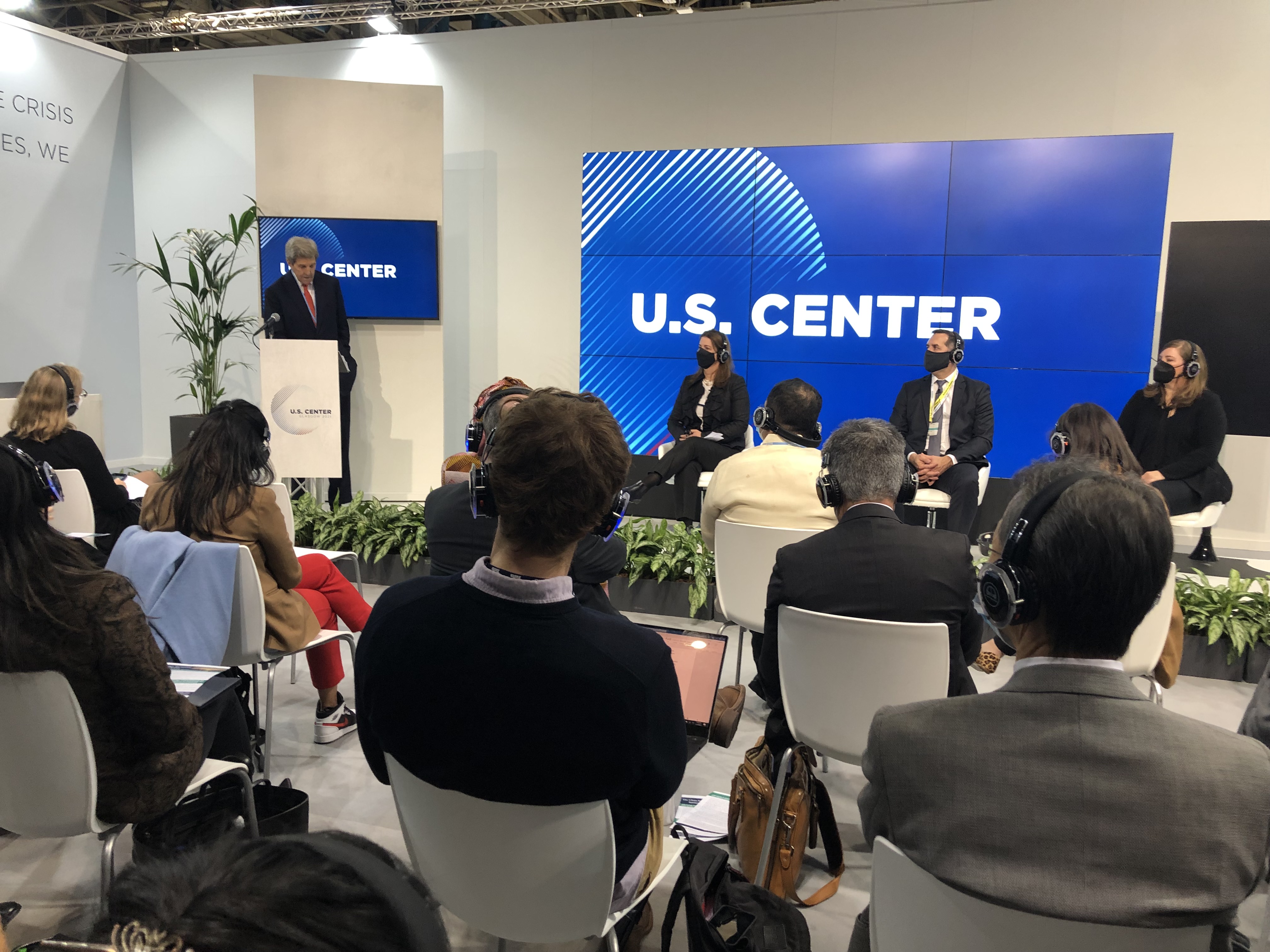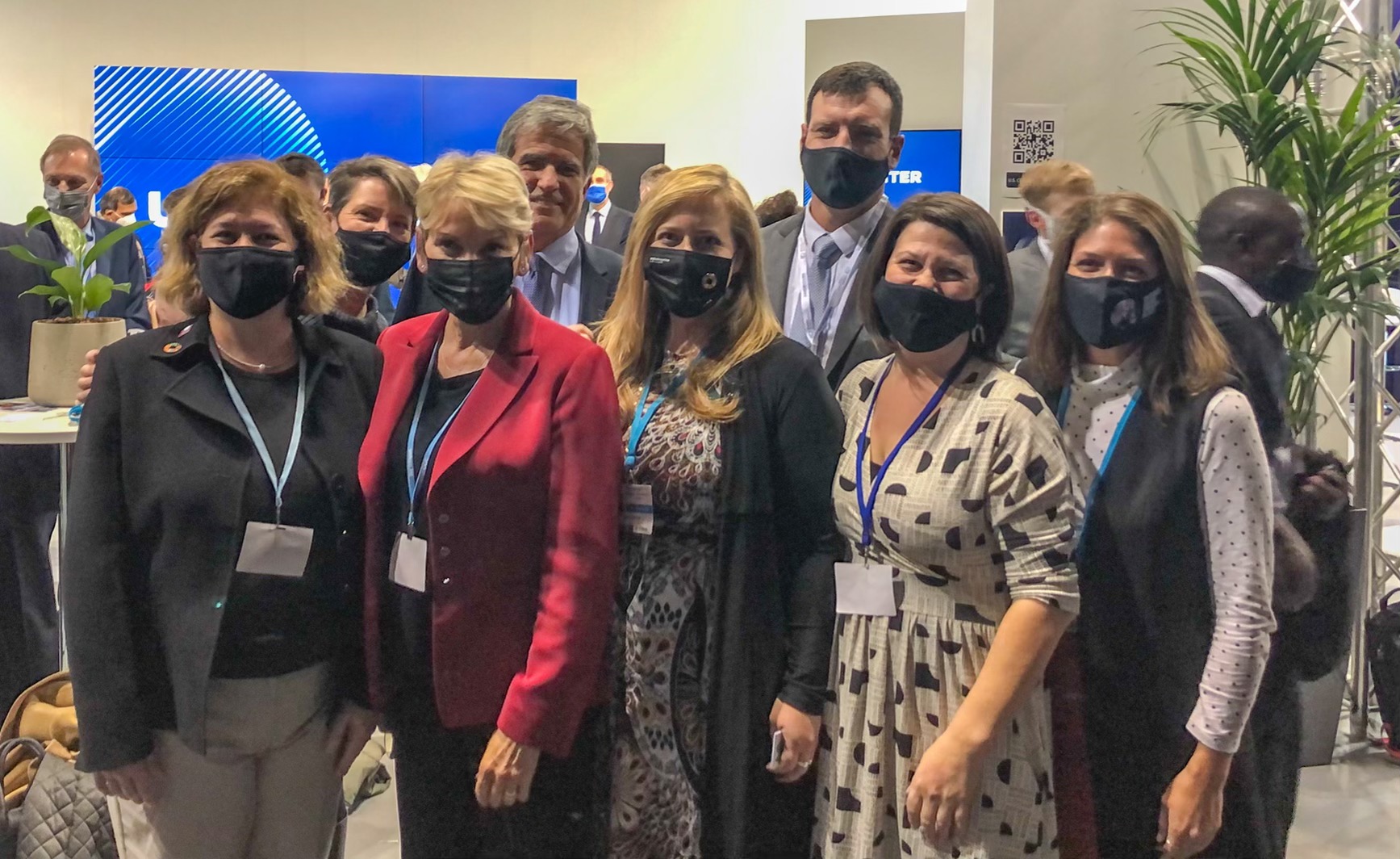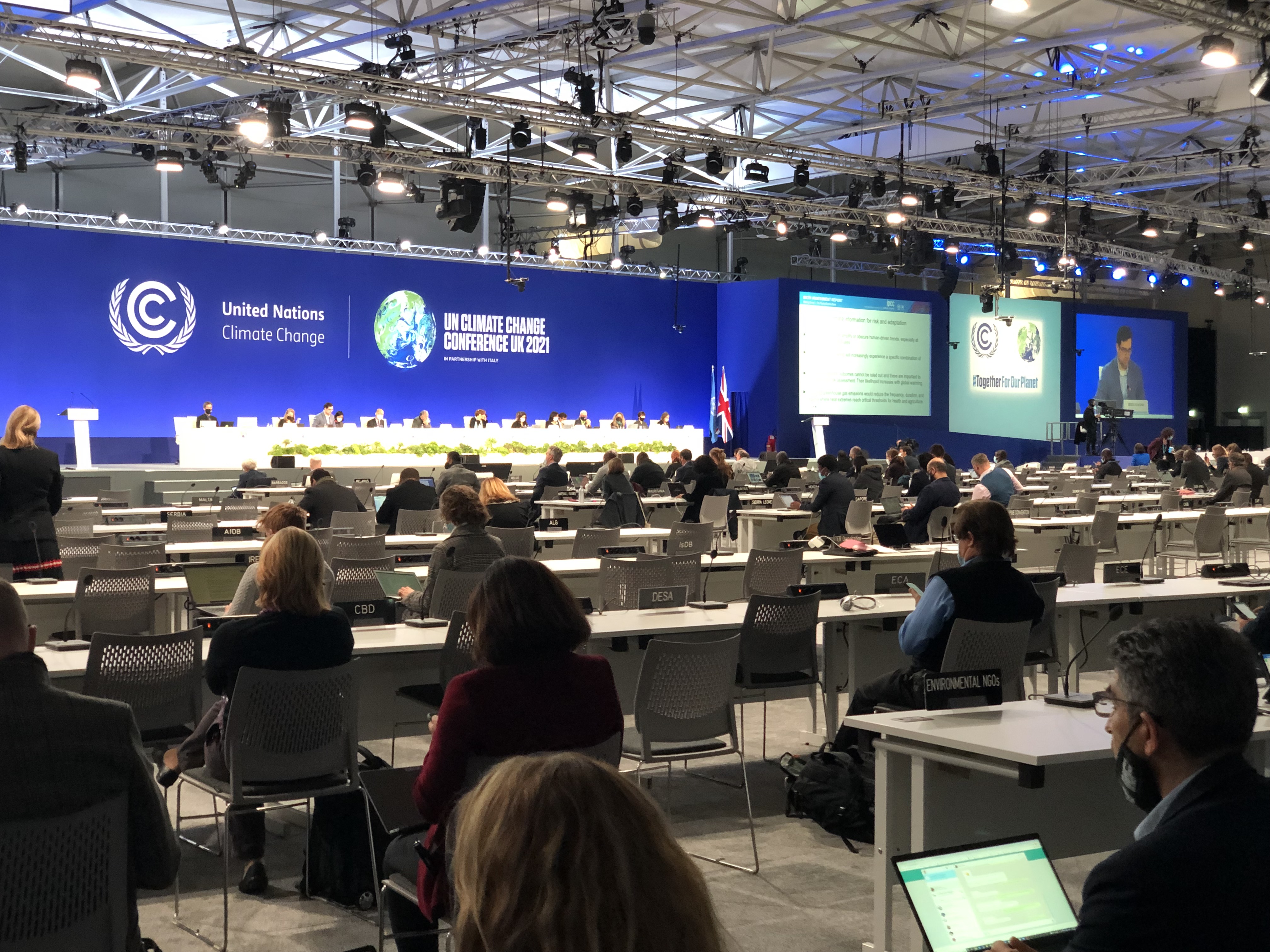
COP26 Takeaways and Insights
By Anna J. Siefken, Executive Director of the Wilton E. Scott Institute for Energy Innovation
NOTE: The comments and insights below reflect a moment in time at a set of proceedings, and do not necessarily represent the views of the Scott Institute.
Over the past two weeks, the 26th United Nations Climate Change Conference (COP26) has seen policymakers from all over the world assemble in Glasgow, Scotland, to make commitments aimed at keeping the goals of the Paris Agreement alive.
COP26 comes six years after the landmark Paris accord was signed by nearly 200 countries to limit rising global temperatures to 2 degrees Celsius above pre-industrial levels, and to “pursue efforts” to cap heating at 1.5 degrees Celsius. The United States pulled out during the last administration, but President Biden rejoined on his first day in office.
With dozens of events and negotiating sessions happening at any one time, it was admittedly challenging to keep up with all the details and milestones. And, of course, those of us who were able to attend the event were not behind closed doors in negotiations. In fact, each time I sat down to write reflections, I would read that the news had changed – there had been new announcements, more details nailed down with the countries of most interest to our climate future.
On this very day, November 12, as world leaders are entering the final day of talks, all have been urged to take drastic and ambitious action to cut greenhouse gas emissions, and the world will be watching to see where things land. Fingers crossed.
Before I get to overarching thoughts on the Summit, a few engagements to highlight:
- The BIG NEWS for Pittsburgh – The U.S. Department of Energy announced that the City of Pittsburgh, Pennsylvania will host the 2022 International Clean Energy + Mission Innovation Ministerials from September 21-23, 2022. DOE Secretary Jennifer M. Granholm shared the news at the United Nations Conference of Parties (COP26), saying, “Pittsburgh is a town that exemplifies how a legacy energy and industrial-dependent economy can be transformed into a technology and innovation powerhouse.” Read the announcement and media coverage here.
-
Thanks to the generosity of the Green Building Alliance and Scott Foster, Director, Sustainable Energy Division, UN Economic Commission for Europe, I attended the signing ceremony for 7 new United Nations Centers of Excellence in High Performance Buildings at the Construction Scotland Innovation Centre.
-
I heard the incredibly prolific and inspiring John Kerry, U.S. Special Presidential Envoy for Climate, speak twice – both at the United States Pavilion and at the Consulate for British Industries gala dinner (thank you, Maureen Eisbrenne, CEO and Co-Founder, and Brian Van Buskirk, Chief Product Officer, at arbnco).
-
I witnessed mayors from across the globe, including Aarhus, newly-named sister city Glasgow, and Pittsburgh at the stunning Glasgow City Chambers as they outlined their ESG and sustainability goals, which was incredible. Even 6 years ago? Not the case.
- I connected with CMU alumna Sruti Modekurty, who is currently studying as an Erasmus Scholar at the Glasgow Caledonian University. Her perspective about the importance of the student voice lent an inspiring bend to the proceedings.
-
I almost saw President Barack Obama. I almost saw President Joe Biden.
Multiple pledges have been made throughout the summit, including deals to phase out coal, cut methane emissions and end deforestation. But activists have accused government ministers and corporations of greenwashing and claimed the agreements to come out of COP26 so far aren’t enough to address the climate emergency.
In fact, as of 3am ET this morning, an updated draft of the COP26 text, which is the document that will give the pledges and agreements made during the summit legal standing, has been published. The document, which outlines COP26 President Alok Sharma’s response to the breakthroughs made so far at the summit, stressed, “the urgency of enhancing ambition and action in relation to mitigation, adaptation and finance in this critical decade.”
“Limiting global warming to 1.5°C requires rapid, deep and sustained reductions in global greenhouse gas emissions, including reducing global carbon dioxide emissions by 45% by 2030 relative to the 2010 level and to net zero around mid-century,” the text said, noting with “deep regret” that developed nations’ pledge to mobilize $100 billion annually for climate change mitigation has not yet been met.
The seven-page text, which must be agreed by all delegations attending the talks, also called on an accelerated phase out of coal and fossil fuel subsidies. No firm dates or targets were set on this issue, however. If this reference is not cut from the final agreement, it will be the first time the outcome of an international climate summit has explicitly mentioned fossil fuels.
A few other observations:
- Negotiators made incremental and segmented progress. Several agreements have so far been made, such as a commitment to end deforestation by 2030 and reduce methane emissions by 30% by the same year. Another example: a declaration was signed by more than 30 countries and dozens of businesses – both those that manufacture vehicles and those that operate fleets – states that, in keeping with a net zero world by 2050, all new vehicle sales should be zero emission by 2035 in leading markets. There is a 2040 deadline for all other markets (details provided by my former colleague Erika Myers, Global eMobility Director at World Resources Institute).
- Technology alone won’t get us there. I was part of many discussions related to existing, expanded and new technologies, with a particular focus on sustainable forestry and hydrogen of all colors, primarily green. But human behavior change is clearly also a strong and influential factor.
- Accountability has been a consistent thread. It’s possible that firms that don’t adopt climate targets will face challenges in the future, making their ability to hire and retain younger workers – including the more than 50k people who protested on two different days in Scotland and around the world – increasingly difficult.
- More people are taking notice. See note about 100k+ protesters over 2 days.
- Transparency will be required. There is significant disagreement about the framework for international carbon markets and how to ensure countries are transparent about meeting their climate goals (or not).
- Debating the framework slowed things down. Negotiators appeared to struggle to define what climate finance should consist of in the first place – the division of funding between mitigation and adaptation and settling the ideological question of which treaty it should sit under.
- Financial structures remain unclear. Financial institutions and the private sector are critical to mobilize funding to help deliver resources at scale that would help to achieve climate plans. In fact, current provisions of climate finance remain insufficient for developing countries to respond to worsening climate change impacts. Developed economies will need to significantly scale up their provision of climate finance, technology transfer and capacity-building for adaptation.
- Distinct, focused coalitions are imperative: For example, the Beyond Oil and Gas Alliance, an initiative founded by our alliance partners in Denmark and Costa Rica aimed at phasing out oil and gas production was been formalized at COP26. France, Greenland, Ireland, Sweden and Wales joined the alliance as full members on Thursday, while Portugal, New Zealand and Italy joined as lower tier members.
- We aren’t moving fast enough. Political resolve and climate plans do not currently add up to the demanding goals set out by the Paris agreement of limiting global warming to “well below 2°C” above preindustrial averages, let alone to keeping it as low as 1.5°C. Instead, the latest number-crunching suggests that the plans of the 193 parties to the agreement collectively carve a path to approximately 2.4°C of warming by the end of the century.
Whatever the outcome of international negotiations, the positive news from COP26 has been the united voice of international, private sector, academics and local government perspectives, merged with citizens and cities as the agents of delivery for decarbonization. The solidarity was galvanizing.
And now the hard work begins.

 With Erika Myers, Global eMobility Director at World Resources Institute and CMU alumna Sruti Modekurty, who is currently studying as an Erasmus Scholar at the Glasgow Caledonian University.
With Erika Myers, Global eMobility Director at World Resources Institute and CMU alumna Sruti Modekurty, who is currently studying as an Erasmus Scholar at the Glasgow Caledonian University. John Kerry
John Kerry
